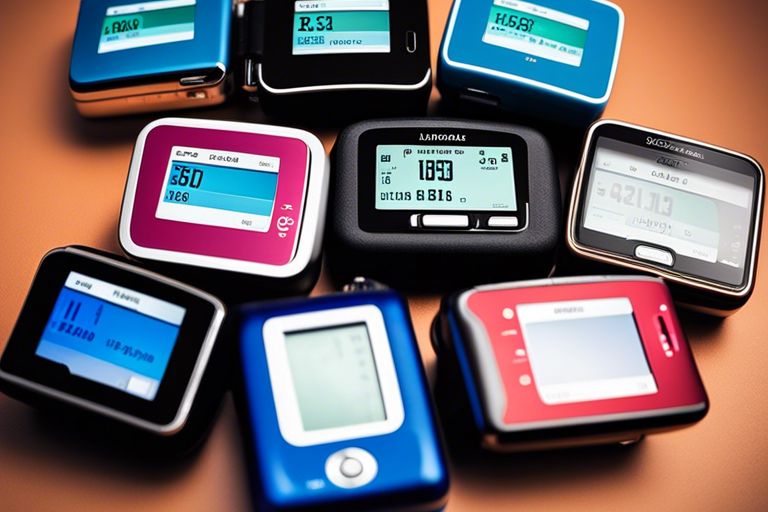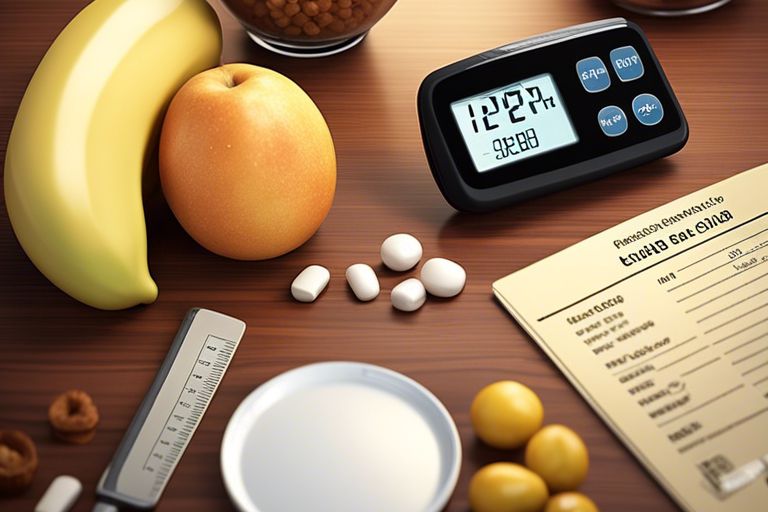Managing exercise with Type 1 Diabetes can be challenging, but it is crucial for overall health and wellbeing. This blog post will outline important guidelines and recommendations for individuals with Type 1 Diabetes looking to incorporate exercise into their daily routine. By understanding the importance of balancing physical activity and blood sugar levels, as well as the necessary precautions to take, you can safely enjoy the benefits of staying active while managing your condition effectively.
Key Takeaways:
- Regular exercise is beneficial: It helps improve blood sugar control, reduce the risk of cardiovascular disease, and increase insulin sensitivity.
- Monitor blood sugar levels: Check blood sugar before, during, and after exercise to prevent hypoglycaemia and hyperglycaemia.
- Choose the right type of exercise: Aerobic exercises like walking, cycling, or swimming are recommended, along with strength training.
- Stay hydrated and carry a fast-acting carbohydrate: Drink water during exercise and have glucose tablets or a sugary drink on hand in case of low blood sugar.
- Consult a healthcare professional: Before starting any exercise routine, speak to your doctor or a diabetes educator to create a personalised plan that suits your needs and abilities.
Understanding the Relationship Between Type 1 Diabetes and Exercise
Physiological Effects of Exercise on Blood Glucose Levels
Exercise has a direct impact on blood glucose levels for individuals with Type 1 Diabetes. During physical activity, the body’s cells become more sensitive to insulin, which can lead to a rapid drop in blood sugar levels. However, intense or prolonged exercise may have the opposite effect, causing blood glucose levels to rise as the body releases stress hormones like adrenaline. It is imperative for individuals with Type 1 Diabetes to monitor their blood sugar levels before, during, and after exercise to understand their body’s response.
Balancing Insulin and Exercise
Managing insulin levels while engaging in physical activity is crucial for individuals with Type 1 Diabetes. Adjusting insulin doses, timing of injections, and meal planning are all factors that need careful consideration when incorporating exercise into a daily routine. Balancing insulin with the type, duration, and intensity of exercise is imperative to prevent hypoglycaemia or hyperglycaemia episodes.
It is vital for individuals with Type 1 Diabetes to work closely with healthcare professionals to develop a personalised exercise plan that considers their insulin regimen, dietary needs, and fluctuations in blood glucose levels. Regular monitoring and adjustments may be required to ensure a safe and effective exercise routine.
General Exercise Guidelines for Type 1 Diabetes
Recommended Types of Physical Activity
Staying active is vital for managing type 1 diabetes. Recommended types of physical activities for individuals with type 1 diabetes include aerobics, strength training, flexibility exercises, and activities that improve balance. It is important to combine these different types of exercises to achieve a well-rounded fitness routine. After consulting with a healthcare professional, individuals can determine the best combination of activities based on their fitness level and health goals.
| Aerobics | Improves cardiovascular health and helps in managing blood glucose levels. |
| Strength Training | Builds muscle mass and improves insulin sensitivity. |
| Flexibility Exercises | Enhances range of motion and reduces the risk of injury. |
| Balance Exercises | Helps in maintaining stability and preventing falls. |
| Combination of Activities | Creates a well-rounded fitness routine for overall health benefits. |
Frequency and Duration of Exercise Sessions
For individuals with type 1 diabetes, it is recommended to engage in physical activity most days of the week, aiming for at least 150 minutes of moderate-intensity exercise per week. It is important to spread out the exercise sessions throughout the week to maintain consistent blood glucose levels and prevent hypoglycaemia or hyperglycaemia. After consulting with a healthcare provider, individuals can tailor their exercise frequency and duration based on their personal health needs and fitness goals.
Exercise Safety and Monitoring
Hypoglycemia Awareness and Management
People with Type 1 Diabetes should be extra vigilant about hypoglycemia during exercise. It is crucial to monitor blood glucose levels before, during, and after physical activity. Symptoms of hypoglycemia such as dizziness, shaking, sweating, and confusion should not be ignored. Always carry a fast-acting source of glucose such as glucose tablets or juice to quickly raise blood sugar levels if needed.
Adjusting Insulin Doses for Exercise
Adjusting insulin doses before and after exercise is key to managing blood sugar levels effectively. In general, reducing basal insulin doses or adjusting mealtime insulin boluses can help prevent hypoglycemia during and after physical activity. It is recommended to work closely with a healthcare provider to determine the appropriate insulin adjustments based on the type, intensity, and duration of exercise.
It is important to note that individual responses to exercise and insulin adjustments can vary. Some trial and error may be needed to find the right balance that works best for each person. Keeping a detailed record of blood glucose levels, insulin doses, and types of exercise can help in fine-tuning the adjustments over time.
Advanced Strategies for Active Individuals
-
Exercise Planning for Competitive Athletes
Competitive athletes with Type 1 Diabetes require meticulous planning to balance their insulin, food intake, and exercise regimen. Working closely with a sports medicine team and an endocrinologist is important to create a tailored plan that ensures optimal performance while maintaining blood glucose levels within a safe range.
-
Technologies that Support Exercise and Glucose Management
Advancements in technology have revolutionised the way individuals with Type 1 Diabetes manage their condition during exercise. Continuous Glucose Monitors (CGMs) and Insulin Pumps with integrated systems can provide real-time data on glucose levels, helping athletes make informed decisions about insulin dosing and carbohydrate intake.
Conclusion: Exercise Recommendations for People with Type 1 Diabetes
In summation, it is crucial for individuals with Type 1 Diabetes to engage in regular physical activity to manage their condition effectively. By following the recommended guidelines of 150 minutes of moderate-intensity exercise per week, alongside monitoring blood sugar levels before, during, and after exercise, individuals can experience numerous health benefits. It is important to consult with healthcare professionals to create a personalised exercise plan that considers individual needs and limitations. With proper management and precautions, exercise can improve overall health, enhance insulin sensitivity, and reduce the risk of complications associated with Type 1 Diabetes.
FAQ
Q: What are the exercise recommendations for people with Type 1 Diabetes?
A: It is recommended that individuals with Type 1 Diabetes engage in a combination of aerobic exercise, such as walking or cycling, and strength training exercises at least three times a week.
Q: How does exercise benefit people with Type 1 Diabetes?
A: Regular exercise can help improve blood sugar control, increase insulin sensitivity, enhance cardiovascular health, and reduce the risk of complications associated with Type 1 Diabetes.
Q: Are there any precautions that people with Type 1 Diabetes should take before exercising?
A: It is important for individuals with Type 1 Diabetes to monitor their blood sugar levels before, during, and after exercise, as well as to have a snack if needed to prevent hypoglycaemia.
Q: What types of exercises are suitable for people with Type 1 Diabetes?
A: Aerobic exercises like swimming, cycling, or brisk walking, as well as strength training exercises using resistance bands or weights, are beneficial for individuals with Type 1 Diabetes.
Q: How can individuals with Type 1 Diabetes stay safe while exercising?
A: To stay safe while exercising, individuals with Type 1 Diabetes should carry a source of fast-acting carbohydrates, wear a medical ID bracelet, stay hydrated, and be aware of the signs of low blood sugar.




